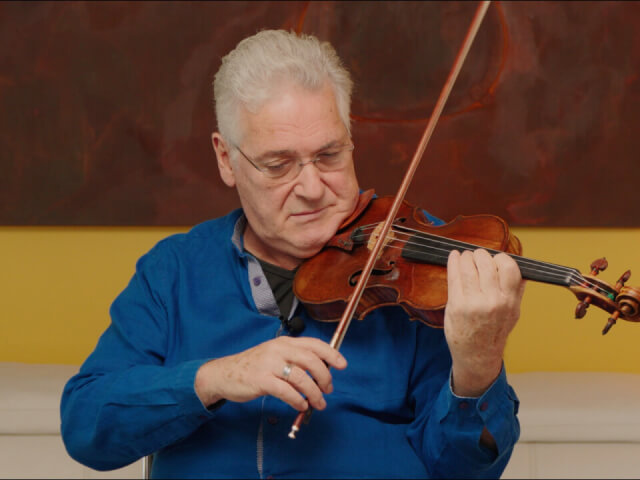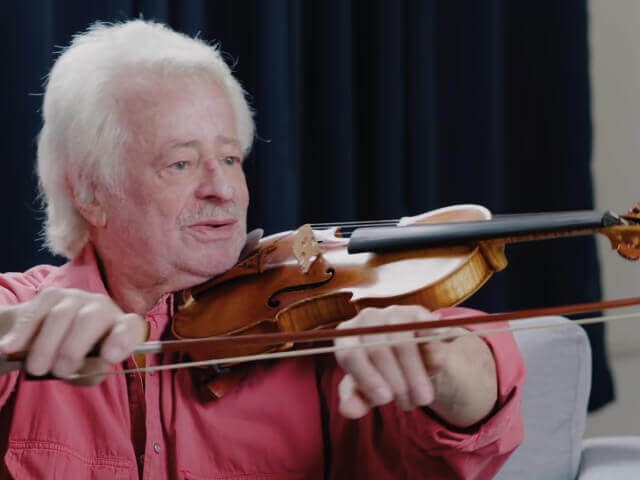Course Syllabus
<p id="">I. Vivace ma non troppo</p>
<p id="">The first movement of Brahms's first sonata calls for moderation; the tempo is "lively but not too much," the opening theme is "mezza voce," and the violin sound should be airy and energetic yet veiled. Hairpins generally refer to both volume and rubato, while the piece's harmonic destinations facilitate changes in color. Jackiw paints an overview of the entire sonata in this lesson, as well as how Brahms uses gestures to tell a story in the first movement.</p>
<p id="">II. Adagio</p>
<p id="">The warmth and comfort that Brahms brings to this movement are interrupted by an ominous march, signaling the unstoppable passage of time. Jackiw points out the characteristics that make this movement unique, and signature to Brahms's style: the key of E-flat major brings us to a darker mood with its lack of open strings, and the marking "poco forte" routinely baffles the player. Stefan Jackiw notes the details to pay attention to and how to create a narrative arc for your interpretation.</p>
<p id="">III. Allegro molto moderato</p>
<p id="">The third and final movement of Brahms's first violin sonata is colored by shades of anxiety and nostalgia, giving way to an acceptance of the passage of time. Here, the piano part is largely the same as in his song "Regenlied", and the form consists of a refrain alternated by episodes, each of which ponders a particular memory. Stefan Jackiw elucidates the specific character required to satisfy both the contradictory tempo marking and the program: contemplative, with gravitas, and a subtle, narrow vibrato.</p>
<p id="">III. Allegro molto moderato</p>
<p id="">The third and final movement of Brahms's first violin sonata is colored by shades of anxiety and nostalgia, giving way to an acceptance of the passage of time. Here, the piano part is largely the same as in his song "Regenlied", and the form consists of a refrain alternated by episodes, each of which ponders a particular memory. Stefan Jackiw elucidates the specific character required to satisfy both the contradictory tempo marking and the program: contemplative, with gravitas, and a subtle, narrow vibrato.</p>
Click here to download the course workbook PDF and see the full syllabus →


























